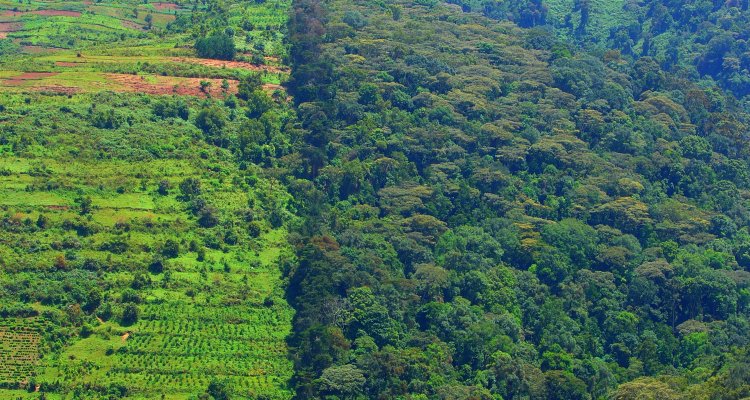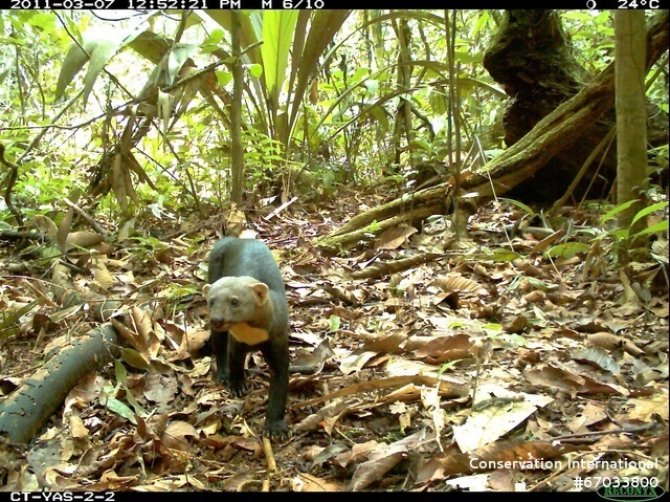
News
Human activity impacts wildlife in protected tropical areas
Tropical mammals living inside protected areas are affected by human activity, even when this activity occurs outside of the protected range. That is the conclusion of a new, international study across 16 tropical forests. Using camera traps, researchers assessed how species are affected, based on their habitat needs and human-caused impacts. These insights can help to inform protected area management and biodiversity policy.
The study, recently published in Nature Ecology & Evolution, is based on the largest long-term standardized camera-trap wildlife survey to-date. Using millions of camera images, the research team examined how human factors, such as human population density and habitat fragmentation, impact 159 mammal species in 16 protected areas across three continents.
Some species more susceptible to human presence
One of the key distinctions used to analyse the data was between ‘specialists’ (species that only occupy specific habitats) and ‘generalists’ (species thriving in diverse habitats). The study found that specialist species are generally more susceptible to the negative impacts of human activities like hunting and land use change. Thus, a white-bellied pangolin living in the Bwindi Impenetrable National Park in Uganda should shuffle closer to its centre, since specialists are likely to fare better the further inward where forest fragmentation is low.
By contrast, generalist species thrive in more diverse habitats. For example the tayra - a dog-sized omnivore in the weasel family found in Neotropical forests - is at home both under forest cover and in grasslands or cropland.

Habitats are more diverse at the edge of a protected area. For example where forest cover meets open landscape, such as agricultural land. Some generalist species thrive in this kind of diverse setting, because it provides access to extra resources. However, the benefits from living near the edge outweigh the drawbacks only if human population density is low. When human population density is high, these generalist species no longer benefit from being near the border, the researchers found, which is likely because of human interference such as hunting.
A standardized camera-trap protocol across all research sites
The dataset was assembled by a large-scale network of researchers based at various research stations all using the same methods to gather their images. The resulting data consists of millions of images collected over the course of multiple years from over 1000 camera-trap sites. Asunción Semper-Pascual, a postdoctoral researcher at the Norwegian University for Life Sciences and the lead author on the study: “There are many different ways to deploy camera-traps so as to track and assess wildlife, but, in this case, every protected area followed the same protocol, making comparisons among sites more robust.”
The data allowed the researchers to see how wildlife appears to be affected by what is happening both inside and outside of the protected areas. Co-author Professor Douglas Sheil of Wageningen University & Research notes how “the Bwindi Impenetrable National Park in Uganda, one of our research sites, is a difficult environment to work in. It is called ‘impenetrable’ with good reason. The cameras helped us to gather consistent data in this challenging landscape. The images let us see animals and behaviours that we would seldom see otherwise. For example, while the mysterious African Golden cat is hardly observed, our very first surveys returned over 700 images revealing a healthy population.”
- Unfortunately, your cookie settings do not allow videos to be displayed. - check your settings
Management of existing protected areas and new ones
Given the landmark 30-by-30 agreement reached at the UN Biodiversity Conference last year, the study will likely inform not only the management of existing tropical protected areas, but also the establishment of new ones. To maximize positive impacts on biodiversity, protected area policy and management strategies need to recognise factors both within and outside protected areas (such as the role of local human populations) that influence biodiversity.
Prof. Sheil: “A better understanding of species-specific responses to stress factors caused by humans can help set conservation priorities, and guide protected area management. Not only locally, for example by focusing on the most vulnerable species. But also at global level, by pointing out how landscape-scale factors affect biodiversity beyond the edge of protected areas.”